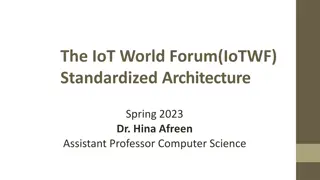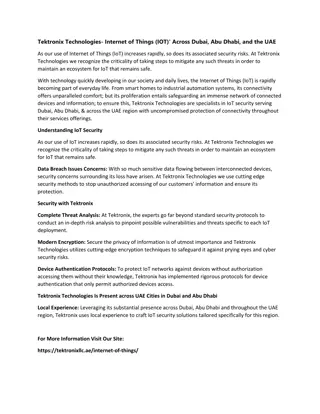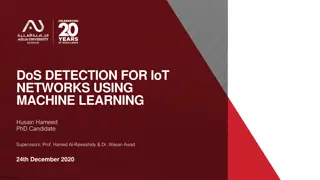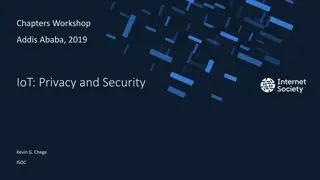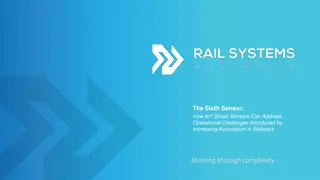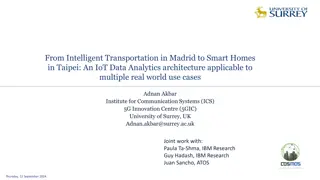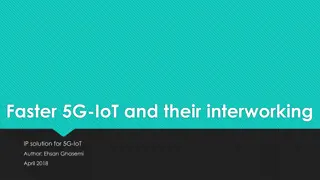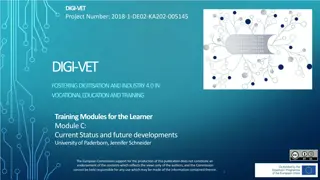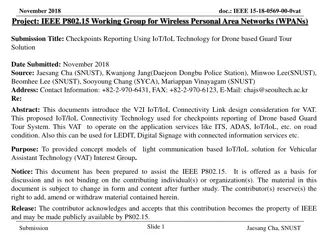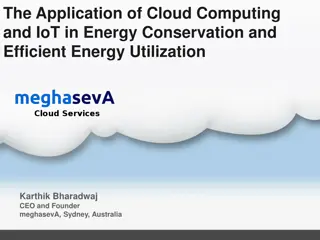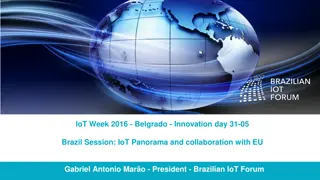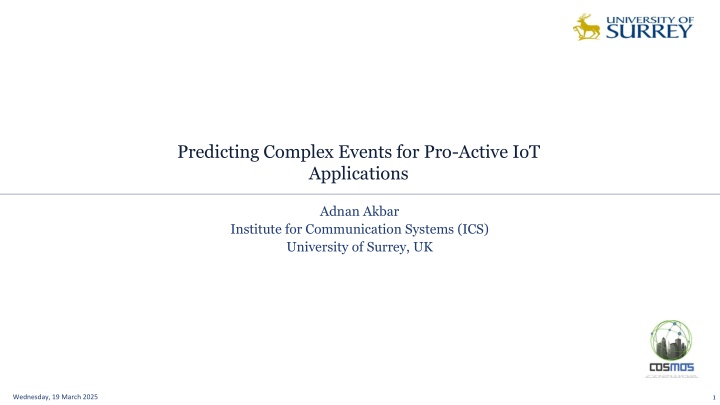
Predicting Complex Events for Pro-Active IoT Applications
Explore how a framework based on Machine Learning (ML) and Complex Event Processing (CEP) can predict complex events for proactive IoT applications. The presentation discusses the challenges in real-time data analysis, introduces a use-case scenario in Intelligent Transportation Systems, and proposes an Adaptive Prediction Algorithm (AWMR) for dynamic IoT data, achieving over 90% accuracy.
Download Presentation

Please find below an Image/Link to download the presentation.
The content on the website is provided AS IS for your information and personal use only. It may not be sold, licensed, or shared on other websites without obtaining consent from the author. If you encounter any issues during the download, it is possible that the publisher has removed the file from their server.
You are allowed to download the files provided on this website for personal or commercial use, subject to the condition that they are used lawfully. All files are the property of their respective owners.
The content on the website is provided AS IS for your information and personal use only. It may not be sold, licensed, or shared on other websites without obtaining consent from the author.
E N D
Presentation Transcript
Predicting Complex Events for Pro-Active IoT Applications Adnan Akbar Institute for Communication Systems (ICS) University of Surrey, UK 1 Wednesday, 19 March 2025
Outline of Presentation Introduction Use-case scenario Proposed solution Results and discussion Conclusion and future work 2 Wednesday, 19 March 2025
Introduction Data Processing Models for IoT Batch Processing (Machine Learning Methods) Event Processing (Complex Event Processing) Machine Learning Methods Based on historical data Not suitable for real-time analysis Unable to correlate data from different sources arriving at different time Central solutions Micro-batch processing Complex Event Processing (CEP) Systems Real-time data analysis Rule-based Engine Distributed architecture 3 Wednesday, 19 March 2025
Use-case scenario Intelligent Transportation System Thousands of traffic sensors deployed in city of Madrid Average Traffic Speed (km/h) Average Traffic Intensity (veh/h) Real-time analysis of data required CEP- Rule-Based inference example If traffic speed < Threshold1 and traffic intensity < Threshold2 for 20 minutes Generate Event Bad Traffic Drawback Reactive Solution as the event happens A little information about the event before it happens is more valuable as compared to all the information after the event has happened (TIBCO CEO Vivek Ranadive in his book The Two-Second Advantage ) Predicting a congestion is more valuable as compared to detecting it 4 Wednesday, 19 March 2025
Proposed Solution (1/2) Propose a framework based on ML and CEP for predicting Complex Events Intuition If the input to a CEP System is a predicted data in future, event detected will also be in future Current Prediction Methods Large training data Error Propagates in real-time environments Propose an Adaptive Prediction algorithm (AWMR) for dynamic IoT data Evaluated the prediction algorithm on a real-world data set with an accuracy of more then 90 % 5 Wednesday, 19 March 2025
Proposed Solution (2/2) Predicted data Adaptive Moving Window Regression (AMWR) Data Source 1 Predicted data Adaptive Moving Window Regression (AMWR) Predicted Complex Events Data Source 2 Message Bus Complex Event Processing System Predicted data Adaptive Moving Window Regression (AMWR) Data Source n 6 Wednesday, 19 March 2025
Adaptive Moving Window Regression (AMWR) 1) Choose Specific Regression method ( SVR, ANN, Linear Regression) SVR (Support Vector Regression) 2) Find optimized training window size during training phase Traffic Intensity = 30 readings Traffic speed = 20 readings 3) Model Training and Deployment 4) Evaluate the Error and retrain the model as new data arrive 5) Adapt prediction window wrt error If error > 20% reduce the prediction window If error < 5 % increase the prediction window Range = 2-4 samples 7 Wednesday, 19 March 2025
Optimum Training Window Size (1/2) Traffic Intensity 8 Wednesday, 19 March 2025
Optimum Training Window Size (2/2) Training Window Size Traffic Speed MAPE (%) Traffic Intensity MAPE (%) 10 34.35 16.75 15 16.88 36.66 20 17.36 10.59 25 36.45 36.20 30 14.55 15.82 35 11.17 36.77 40 38.08 17.11 9 Wednesday, 19 March 2025
Results Training Window = 30 readings MAPE = 15.82 % Training Window = 20 readings MAPE = 10.59 % 10 Wednesday, 19 March 2025
Conclusion Advantages: Provide basis for proactive IoT applications Able to track the Error High accuracy Low complexity as very small window size is used Adaptive in nature to ensure certain quality in prediction Drawbacks: Different data sources have different prediction Error Error propagates when different data sources are combined using CEP rules Future work: Evaluate prediction algorithm for other IoT scenarios Model the overall system in order to demonstrate the Error propagation 11 Wednesday, 19 March 2025

